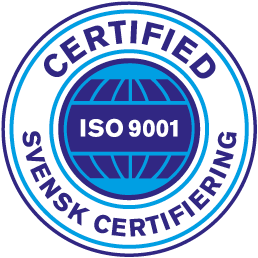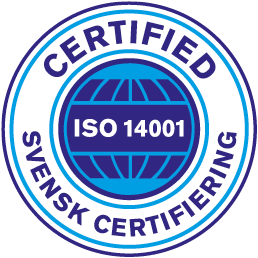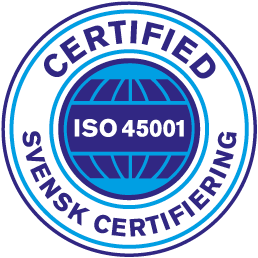It was developed for the purpose of saving time in the shirt factory. Today the smart handling and transporting system from Borås has spread to other industries. The car industry is one of many who have seen the benefits from the system.
The products arrive piece by piece to the pre-determined work station, hanging in a clamp on a transporting line in the ceiling. The material handling system from Eton Systems in Borås is used in many apparel and textile factories all around the world.
- We were thinking LEAN even before the idea was developed, says MD Tintin Jonasson.
Her father Inge Davidson invented the system in the 1960s to reduce the non-productive time in his mother’s shirt factory. He realized how much inventory they created and how much time they spent in moving bundles between the machines in the factory.
By developing a system that could handle the pieces one by one, he could reduce the inventory and shorten the throughput time. More time could be spent in sewing and adding value to the product. Even other apparel factories could now see the benefits with the system and the business started. japan, the home of lean manufacturing was for a long time Eton’s largest market.
But in time with the apparel industry moving to China, India and other Asian countries the competition has increased. The worldwide financial crisis has also had an impact on our sales situation. In China today we have a large number of competitors, selling similar systems, says Tintin Jonasson.
At the same time Eton can experience how the system can increase efficiency and save floor space even in other industries than Apparel and Textile. The latest version of the Eton System can handle products up to 12 kilo in weight and is now unleashed in the car industry among others.
The subcontracting company IAC Group has used the system for many years to transport car side posts in their factory in Skara. Now the group has invested further in the Eton System for transporting and sequence sorting dashboards in their factory in Gothenburg. When an order is received the exact component is automatically picked from the buffer system in the ceiling. “We have tried many systems, but the Eton System has given us the most flexibility and required the least floor space. You do not have to adjust your factory to the conveyor”, says Daniel Milicevic, Lean coordinator at IAC Group in Gothenburg.
Tintin Jonasson does not think it is remarkable that the car industry, working so hard with production improvements for many years, can learn something from the Shirt industry:
– Talking about logistics, the apparel industry has one of the most complicated production situations of all. You need around 50 operations to manufacture a shirt. Considering all the different thread colours and sizes it can be endless variations.
This is how it works
- Each article is loaded in a RFID tagged hanger.
- The hangers are transported on a main line in the ceiling.
- The products can be stored hanging in the buffer system.
- The special chain presents each product to the operator to the exact point of choice.
- The production flow is controlled by a software program. For every new order the correct article is automatically routed to the predetermined work station.
- The system consists of modules, which are assembled to suit the customer’s need.
See the Eton system minimizing manual handling and increasing efficiency when producing dashboards at IAC in Gothenburg: http://www.youtube.com/watch?v=lIi9dHAWLcM




